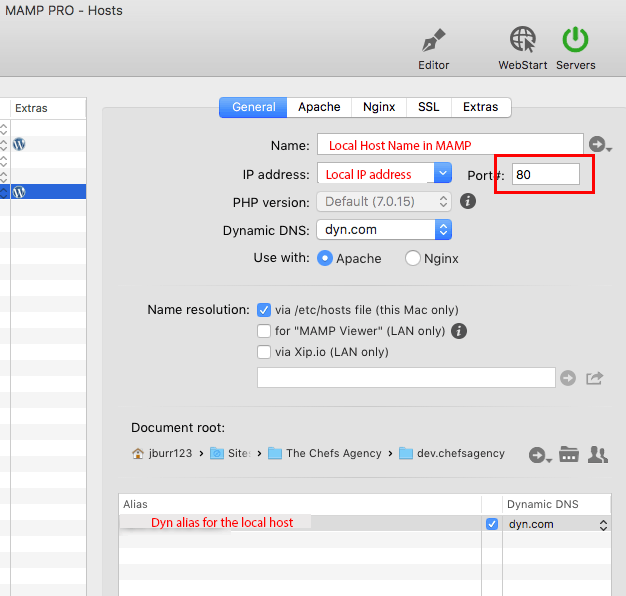
- #SYNCHIN LOCAL MAMP WORDPRESS TO LIVE HOW TO#
- #SYNCHIN LOCAL MAMP WORDPRESS TO LIVE INSTALL#
- #SYNCHIN LOCAL MAMP WORDPRESS TO LIVE MANUAL#
- #SYNCHIN LOCAL MAMP WORDPRESS TO LIVE DOWNLOAD#
- #SYNCHIN LOCAL MAMP WORDPRESS TO LIVE FREE#
If you want a seamless transfer of your website it might be best to consider a plugin. Method 2: Use a Plugin to Move Your WordPress Website
#SYNCHIN LOCAL MAMP WORDPRESS TO LIVE INSTALL#
You will of course have to set your menu locations and re-add your widgets, but considering that everything else is moved over for you, this is a great option if you don’t want to install any extra plugins or process the move manually. This method will move your posts, pages, media and menus to your live site. How long you wait will depend on how much content you import and your hosting plan. Now just wait for your content to import. Next use the Choose File option to select your XML file then click to upload and import. To do this first click on the Run Importer options under the WordPress heading (Note: you can also use the importer feature to move content from other sources such as Blogger, Tumblr, etc). xml file you exported from your localhost.

If you’re prompted to install the WordPress import plugin, do so and then activate it. Now login to your live WordPress site, then activate the theme and plugins you used on the local server. Once that’s done navigate to Tools > Import.
#SYNCHIN LOCAL MAMP WORDPRESS TO LIVE DOWNLOAD#
The file will contain all the details about your site’s content (unless you selected a singular content download option, such as only your posts, pages, a custom post type or your media). This will download an XML file to your computer. Select Export and check the “All content” radial button. Okay – to get started moving your website go to your locally installed WordPress dashboard and scroll down to Tools. If you do have old content you can always use our guide to reset your WordPress website so you have a clean installation to work with. This is very important as the WordPress import feature will not override existing content, it will simply add to it. This method assumes that WordPress is already installed and setup on your live hosting account and that there is no content on your live website. Method 1: Export & Import Content Using Core WordPress FeaturesĪ quick and easy way to move a WordPress site from local server to a production environment is by using the built-in export tool in WordPress. Alternatively, you can use the File Manager option in cPanel but unlike SFTP, cPanel doesn’t provide a view of your local directory structure. Okay, with all of that in place, we should be ready to go. You’ll be using it to upload the files to your host. SFTP AccessĪnd finally, you should have SFTP access to your hosting account along with a client program such as FileZilla. If you’re not ready for that price tag, you can find a great starter shared hosting plan for around $3 per month from companies such as Bluehost or SiteGround.

#SYNCHIN LOCAL MAMP WORDPRESS TO LIVE FREE#
Plans start at $29 per month for one installation (but you can get 2 months free on annual plans when you use our link). Plus, WP Engine makes managing your sites easy thanks to their intuitive admin panel. We of course recommend WP Engine managed WordPress hosting – it’s how we power all of our websites and live theme demos.
#SYNCHIN LOCAL MAMP WORDPRESS TO LIVE MANUAL#
Better yet, many providers offer one-click install scripts for WordPress so you don’t have to go through the manual setup. Fortunately, most hosting providers support PHP and MySQL. You’ll also need an active hosting plan that offers PHP and MySQL support.
#SYNCHIN LOCAL MAMP WORDPRESS TO LIVE HOW TO#
To learn more about setting up your own localhost environment checkout our guides on how to install WordPress locally, or checkout Local by Flywheel. You should have a WordPress website running on your computer.

These are just a few simple requirements that you’ll need before you can get started. In this tutorial, I’ll assume that you already have met a few prerequisites. This process allows you to safely move all of your site’s content (images, posts, and pages) as well as themes and plugins from a directory on your computer to your host’s production server. Obviously, there are a couple of handy plugins that can make this process a breeze, but it’s always advantageous to learn the manual process. In this post, I’ll be going through the process of moving a WordPress website from a local server to a live server. Similarly, future updates to the website are done and tested locally before being uploaded to the live environment. Since every edit requires saving and refreshing, developing a WordPress site on a live server can easily turn into a nightmare given the limitations of bandwidth and Internet traffic.įor this reason, most developers rightly choose to do all the nitty-gritty of WordPress development on a local server and later upload the finished website to the live server. A virtual web server installed on your computer (or local server) allows you to build and customize a WordPress website with ease and speed.


 0 kommentar(er)
0 kommentar(er)
